Blog
-
Jan 04, 2017 CIA's Top 10 Stories of 2016
-
Jan 04, 2017 Surprising Stories You May Have Missed in 2016

Vietnam, cartography, the Bay of Pigs, UFOs … curious what CIA has to say about these topics? You’re not alone. That’s why we dug deep into our archives to uncover the stories behind some of the most asked about Agency history, and then wrote about what we found as articles throughout this past year.
If you missed any of the articles, don’t worry.
Below, in no particular order, are the tales of CIA’s past that you might have wondered about, but never knew we wrote about in 2016.
* * * * *
Flying Saucers or Soviets? How to Investigate a UFO
TRIGON: Spies Passing in the Night
Telling Data Stories: An Interview
CIA and the Wars in Southeast Asia
The Mapmaker’s Craft: A History of Cartography at CIA
Remembering CIA’s Heroes: Nels “Benny” Benson
A Contingency for Every Action
Interested in more stories?
- Check out our Top 10 Stories of 2016.
- For last year's most popular stories, see CIA's Top 15 Stories of 2015.
-
Sep 27, 2016 CIA Receives NAAAP Milestone Honor and Silver Sponsor Award
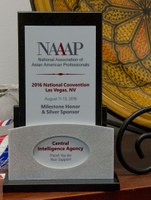 The National Association of Asian American Professionals (NAAAP) recently honored CIA with a “Milestone Honor and Silver Sponsor Award” in recognition of the Agency’s continuous support to the organization for over 10 years.
The National Association of Asian American Professionals (NAAAP) recently honored CIA with a “Milestone Honor and Silver Sponsor Award” in recognition of the Agency’s continuous support to the organization for over 10 years.The NAAAP is a non-profit organization that cultivates and empowers Asian Pacific Islander American leaders through professional development, community service, and networking.
The Agency partners with NAAAP to develop recruitment and community outreach opportunities in the Asian Pacific Islander American community via the association’s national, regional, and local chapters.
The CIA’s partnership with NAAAP is one of many ways that the Agency moves towards its diversity and inclusion goal of being an “employer of choice” for all communities.
-
Jul 21, 2016 Who First Cracked the ENIGMA Cipher?
 During World War II, the Germans used ENIGMA, a cipher machine, to develop nearly unbreakable codes for sending messages. ENIGMA’s settings offered approx. 158,000,000,000,000,000,000 possible solutions, yet the Allies were eventually able to crack its code.
During World War II, the Germans used ENIGMA, a cipher machine, to develop nearly unbreakable codes for sending messages. ENIGMA’s settings offered approx. 158,000,000,000,000,000,000 possible solutions, yet the Allies were eventually able to crack its code.The machine was developed by the Dutch to communicate banking secrets. The Germans bought the patent in 1923 for intelligence purposes. Polish intelligence was able to purchase an ENIGMA at a trade fair and procure a codebook from a French agent.
In the 1930s, the French had recruited a source who had provided numerous classified documents about the machine; they then approached the British, the Czechs, and the Poles, who took the fullest advantage of the information.
Poland was the first to realize that the solution to breaking ENIGMA would most likely be discovered by a mathematician. Polish cryptanalysts as early as 1932 could decode German ciphers and, by 1939, they were able to successfully decipher messages written with an earlier version of ENIGMA using a replica machine that could emulate the way ENIGMA worked.
By 1933, Poland had demonstrated the ability to break those early ciphers and, by the following year, were producing their own ENIGMA machines.
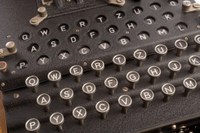 July 24-26, 1939, Poland hosted a secret tripartite meeting with the United Kingdom and France to discuss the decryption of messages from the German ENIGMA machine. They explained how they had broken ENIGMA, produced two copies of the machine they had built, and shared technical drawings of their version of “the Bombe,” a device that could find ENIGMA keys by testing tens of thousands of possible combinations.
July 24-26, 1939, Poland hosted a secret tripartite meeting with the United Kingdom and France to discuss the decryption of messages from the German ENIGMA machine. They explained how they had broken ENIGMA, produced two copies of the machine they had built, and shared technical drawings of their version of “the Bombe,” a device that could find ENIGMA keys by testing tens of thousands of possible combinations.When Poland was overrun by Germany in September 1939, the Polish as well as French cryptanalysts shared everything they knew about ENIGMA with the UK, which allowed the cryptanalysts at Bletchley Park, including the famous Alan Turing, to finally crack the ENIGMA ciphers.
-
Jun 07, 2016 CIA Memorial Garden and Koi PondThrough the quiet beauty of living nature, the CIA Memorial Garden is a tribute to all deceased intelligence officers and contractors who served their country.
Dedicated on June 7, 1996, the garden is located on a hillside between the Original Headquarters Building and the Auditorium at CIA Headquarters in Langley, Virginia. It is one of several memorials on the CIA compound (including the Office of Strategic Services Memorial and the CIA Memorial Wall).
The garden is a blend of natural and landscaped plantings amid stone outcroppings from which a cascade of water continuously falls into a large fishpond, providing a tranquil and reflective place for Agency employees. Koi fish in shades of gold, pearl, and coral swim peacefully beneath the waters. The words, "In remembrance of those whose unheralded efforts served a grateful nation," are cast in a brass plaque set in fieldstone to ensure the living will not forget the fallen. -
Apr 28, 2016 Secret Writing: CIA’s Oldest Classified Documents
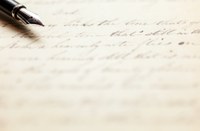 Do you want to read the oldest classified documents in our collection? Learn how to make invisible ink? See the only classified documents still in existence from the first World War? Then you’re in luck.
Do you want to read the oldest classified documents in our collection? Learn how to make invisible ink? See the only classified documents still in existence from the first World War? Then you’re in luck.Five years ago, the CIA declassified the US Government’s six oldest classified documents, dating from 1917 and 1918. These documents, which describe secret writing techniques and are housed at the National Archives, are believed to be the only remaining classified documents from the World War I era. Documents describing secret writing fall under the CIA’s purview to declassify.
“These documents remained classified for nearly a century until recent advancements in technology made it possible to release them,” former CIA Director Leon Panetta said during the document’s release 2011. “When historical information is no longer sensitive, we take seriously our responsibility to share it with the American people.”
One document outlines the chemicals and techniques necessary for developing certain types of secret writing ink and a method for opening sealed letters without detection. Another memorandum dated June 14, 1918 – written in French – reveals the formula the German’s used to produce invisible ink.
The documents are available on the CIA.gov eFOIA section and in the CIA Records Search Tool (CREST) at the National Archives in College Park, Maryland. CREST currently houses nearly 13 million pages of declassified Agency documents. Since 1995, the Agency has released over 36 million pages as a result of Executive Orders, the Freedom of Information Act (FOIA), the Privacy Act, and mandatory declassification reviews.
See the Secret Writing documents for yourself by clicking on the links below:
Secret writing document one (PDF 447 KB)
Secret writing document two (PDF 1.06 MB)
Secret writing document three (PDF 427 KB)
Secret writing document four (PDF 2.70 MB)
Secret writing document five (PDF 438 KB)
Secret writing document six (PDF 1.45 MB) -
Jan 21, 2016 Take a Peek Into Our “X-Files”
The CIA declassified hundreds of documents in 1978 detailing the Agency’s investigations into Unidentified Flying Objects (UFOs). The documents date primarily from the late 1940s and 1950s.
To help navigate the vast amount of data contained in our FOIA UFO collection, we’ve decided to highlight a few documents both skeptics and believers will find interesting. Below you will find five documents we think X-Files character Agent Fox Mulder would love to use to try and persuade others of the existence of extraterrestrial activity. We also pulled five documents we think his skeptical partner, Agent Dana Scully, could use to prove there is a scientific explanation for UFO sightings.
The truth is out there; click on the links to find it.
 Top 5 CIA Documents Mulder Would Love To Get His Hands On:
Top 5 CIA Documents Mulder Would Love To Get His Hands On:- Flying Saucers Reported Over East Germany, 1952 (PDF 325 KB)
- Minutes of Branch Chief’s Meeting on UFOs, 11 August 1952 (PDF 162 KB)
- Flying Saucers Reported Over Spain and North Africa, 1952 (PDF 266 KB)
- Survey of Flying Saucer Reports, 1 August 1952 (PDF 175 KB)
- Flying Saucers Reported Over Belgian Congo Uranium Mines, 1952 (PDF 262 KB)
 Top 5 CIA Documents Scully Would Love To Get Her Hands On:
Top 5 CIA Documents Scully Would Love To Get Her Hands On:- Scientific Advisory Panel on Unidentified Flying Objects, 14-17 January 1953 (PDF 907 KB)
- Office Memorandum on Flying Saucers, 15 March 1949 (PDF 110 KB)
- Memorandum to the CIA Director on Flying Saucers, 2 October 1952 (PDF 443 KB)
- Meeting of the OSI Advisory Group on UFOs, 21 January 1953 (PDF 194 KB)
- Memorandum for the Record on Flying Saucers, 3 December 1952 (PDF 179 KB)
Do you want to believe? Then find out how to investigate a flying saucer.
-
Dec 31, 2015 CIA's Top 15 Stories of 2015
Think you know the CIA? Some of these stories might just surprise you...

This year we dove deep into our archives to uncover some of the most unexpected and fascinating aspects of our history. From behind the walls of one of America’s most mysterious sites to a rumored recipe Julia Child cooked up to keep the sharks at bay, this year’s most popular stories on cia.gov covered a lot of unusual ground. Unsung heroes who lost their lives in service to their country, the true story behind a famous photograph during the Fall of Saigon, dog training tips from one of the best scent-detection programs in the world...we covered it all. So sit back and enjoy the CIA’s 15 most popular stories of 2015. (We can’t wait to show you what we have planned for 2016!)
#15: Top 10 Research Tips for a Great School Year from CIA Librarians
#14: Remembering CIA's Heroes: William F. Buckley
#13: The Enigma of Alan Turing
#12: Cloak and Dagger: The Unexpected Beginnings of CIA
#11: Studies in Intelligence Celebrates 60th Birthday
#10: Julia Child and the OSS Recipe for Shark Repellent
#9: What do James Bond, Downton Abbey, and the CIA have in Common?
#8: Post Office Dedicated To Fallen CIA Operations Officer
#7: Surprise, Kill, Vanish: The Legend of the Jedburghs
#6: Remembering CIA’s Heroes: Jacqueline K. Van Landingham
#5: Area 51, U-2 and the Accidental Test Flight
#4: CIA's Top 10 Dog Training Tips
-
Dec 22, 2015 If You Want a Friend in Washington...
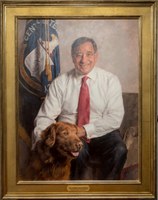 If you worked at CIA Headquarters during Leon Panetta’s tenure as Director, you almost certainly saw or heard stories about Bravo, Panetta’s loyal Golden Retriever. Bravo came to work with the Director every day and could often be spotted during his walks around the compound. Bravo was such an integral part of Panetta’s life that he was immortalized, along with his owner, in Panetta’s official portrait in the Directors’ Gallery (as well his Secretary of Defense portrait in the Pentagon). Bravo died earlier this month.
If you worked at CIA Headquarters during Leon Panetta’s tenure as Director, you almost certainly saw or heard stories about Bravo, Panetta’s loyal Golden Retriever. Bravo came to work with the Director every day and could often be spotted during his walks around the compound. Bravo was such an integral part of Panetta’s life that he was immortalized, along with his owner, in Panetta’s official portrait in the Directors’ Gallery (as well his Secretary of Defense portrait in the Pentagon). Bravo died earlier this month.As the CIA Director’s dog, Bravo was privy to many secret conversations, including the planning of the 2011 raid on Usama bin Ladin’s compound in Pakistan.
 Staffers described him as a level-headed fixture in the meetings. Bravo was a confidant and loyal companion to the Director, a source of calm amidst the struggles of leadership and a nation at war.
Staffers described him as a level-headed fixture in the meetings. Bravo was a confidant and loyal companion to the Director, a source of calm amidst the struggles of leadership and a nation at war.On Panetta’s last day as CIA Director, Bravo reportedly refused to get in the car and had to be cajoled into leaving. His memory will live on in the portrait in CIA Headquarters, and in the officers who had the pleasure of meeting him.
-
Sep 29, 2015 The OSS Architect Who Designed the UN Logo
Oliver Lincoln Lundquist, a talented architect and industrial designer, worked for the Office of Strategic Services (OSS), CIA’s predecessor, during World War II and led the team that designed the official United Nations emblem.
In 1945, the US State Department asked the OSS to help create graphics for the UN Conference on International Organization in San Francisco, where the UN Charter was drafted. Lundquist’s team set out to create a lapel pin for the delegates that could serve as their official form of identification. It was initially designed by another OSS officer, Donal McLaughlin, who worked for Lundquist as the director of graphics for the conference. This became the prototype for the UN logo you see today. The design consisted of a top-down view of the globe, centered on North America and showing all of the continents except Antarctica, with two olive branches on either side to symbolize peace. The design was in shades of blue, a purposeful choice to contrast with red, a color traditionally associated with war.The final emblem chosen by the UN was a slightly modified version of this design.
After his OSS service, Lundquist joined a private practice as an architect, working on hospitals, schools, private residences, and even the former Kodak Building in Manhattan. In 2008, Lundquist passed away at the age of 92.
The UN logo isn’t the only design of Lundquist’s around today. He also created one of the most recognizable product packages still found on store shelves: the blue-and-white Q-Tip box.
Want to learn more?
A fascinating history of the UN logo was written by former OSS officer Donal McLaughlin, called: "Origin of the Emblem and other Recollections of the 1945 UN Conference." [PDF 5.19 MB].
This file was provided courtesy of the UN Archives and Records Management Section.



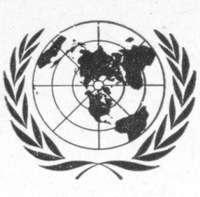
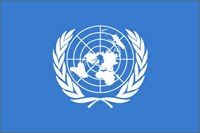

Interested in taking a peek into our X-Files? Want to know more about Hamilton’s spy on the inside? Curious how to make invisible ink? Then you’re in luck.
This year’s most popular stories on cia.gov have a little something for everyone.
From tributes to our unsung heroes who lost their lives in service to their country, to the surprising truth behind who was the first to crack the ENIGMA cipher (hint: it wasn’t Alan Turing), our articles have covered a lot of topics.
We hope you enjoy this year’s Top 10 stories, and we can’t wait to surprise you with more untold tales, little know wonders, and heroic endeavors in 2017!
* * * * *
#10. Bush as Director of Central Intelligence
#9. The Spy Catcher: Jeanne Vertefeuille
#8. Who First Cracked the ENIGMA Cipher?
#7. Remembering CIA’s Heroes: Leslianne Shedd
#6. Secret Writing
#5. The Spymaster’s Toolkit
#4. The Mystery of Jane Wallis Burrell: First CIA Officer To Die in the Agency’s Service
#3. Minutes and Years: The Bin Ladin Operation
#2. The Legend of Hercules Mulligan
#1. Take a Peek Into Our X-Files
Interested in more stories?